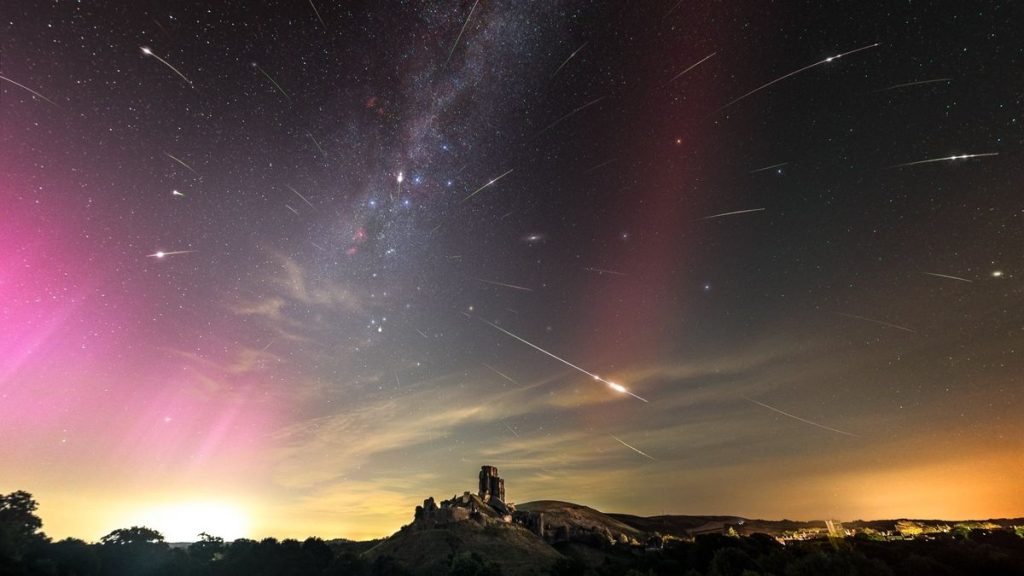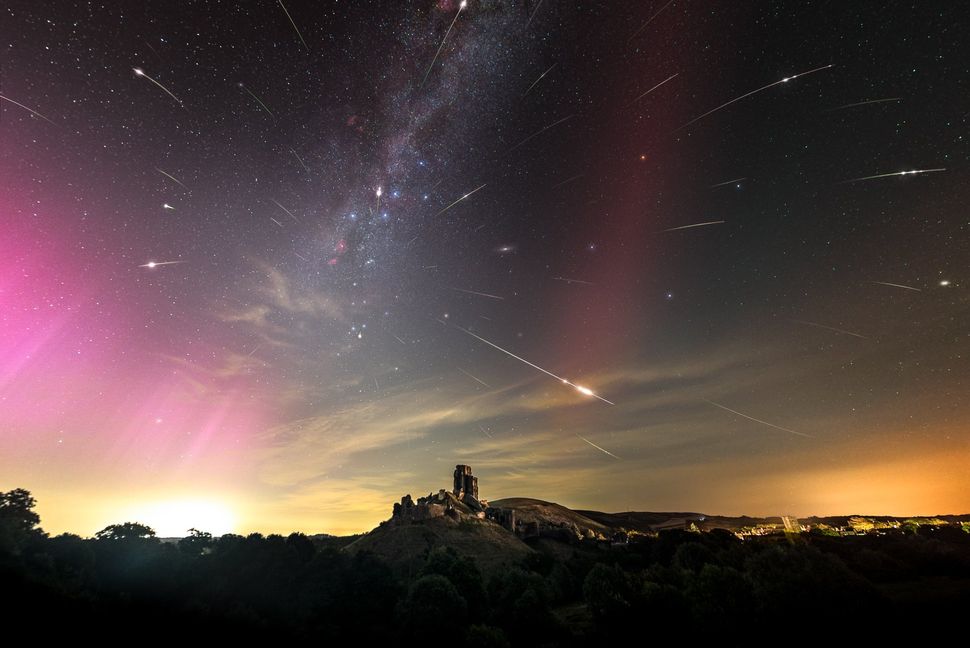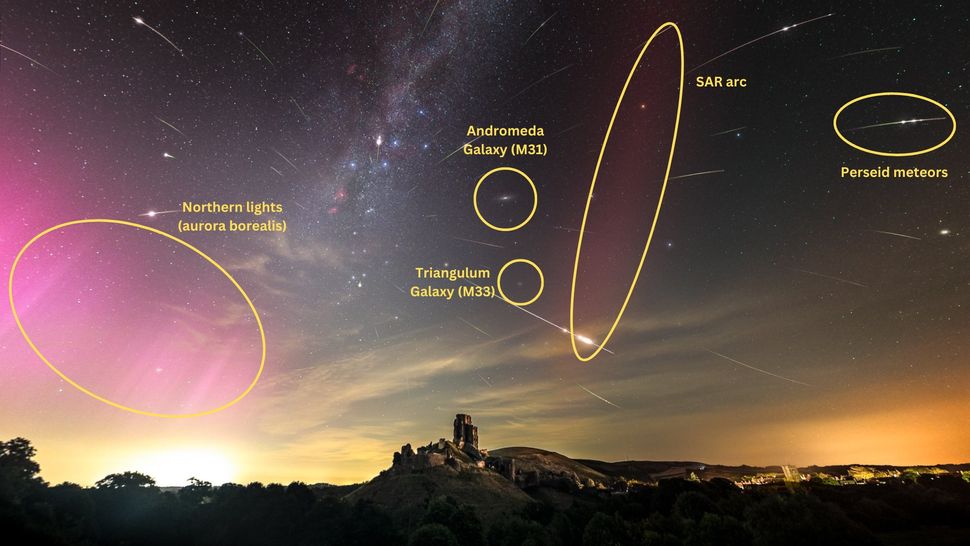
‘Once-in-a-lifetime’ photo: Perseid meteors, northern lights and rare glowing arc shine over 11th-century castle (Image Credit: Space.com)

When photographer Josh Dury set out to photograph the peak of the Perseid meteor shower overnight on Aug. 12 and Aug. 13, little did he know he’d be treated to a truly special cosmic display.
The breathtaking image Dury captured shows not only Perseid meteors raining down through the sky but also northern lights and a rare atmospheric glow known as an SAR arc alongside the Andromeda and Triangulum galaxies.
“To think that so much is going on in the astronomical scene that evening with the Andromeda and Triangulum galaxies also visible, makes this definitely a once-in-a-lifetime photograph,” Dury told Space.com in an email.
Dury chose 11th Century Corfe Castle as the setting for his image as he’d photographed from the location on May 10 during the epic G5 geomagnetic storm and captured some incredible scenes.
Just to happy with these shots of the Aurora Super Storm on Friday!!#NorthernLights #aurora #Auroraborealis #astrophotography #astrophoto #astro #space #astronomy #landscape @BBCEarth @NatGeoUK @CorfeCastleUK @DorsetMag @BBCBreakfast @BBCSpotlight @BBCBristol @MetOfficeSpace pic.twitter.com/3NojAWJMQrMay 12, 2024
And with strong G3 conditions forecast during the peak of the Perseid meteor shower, Dury set out to try his luck again.
Suffice it to say it was another storming success.
“When taking the photograph, I had no anticipation that the Northern Lights would be visible. I gave it a go,” Dury told Space.com. “Over 3 1/2 hours, I was able to catch 50 sub-exposures of the Perseid meteor shower emanating from the radiant,” Dury continued.
“To my surprise, however, my phone began to go off with notifications for potential aurora. Moments later on camera, I was able to photograph the northern lights as the meteor shower was taking place,” Dury explained.
And if that wasn’t enough, another hidden gem revealed itself to Dury when he was looking through his raw images of the majestic scene.
“If this already wasn’t a surprise, I was somewhat shocked to find in my rushes that I had photographed the stable red arc (SAR). This was only visible by camera,” Dury exclaimed.
But that wasn’t it! The highly detailed image also contains popular skywatching targets such as the Andromeda Galaxy (M31) and the harder-to-spot Triangulum Galaxy (M33).

Phenomena explained
Perseid meteor shower
The Perseid meteor shower is an annual shower that occurs between mid-July to late August. Perseids occur when Earth travels through debris — bits of ice and rock — left behind from Comet Swift-Tuttle, which last past Earth in 1992. When the debris enters Earth’s atmosphere it burns up in bright bursts of light. These Perseid “shooting stars”‘ appear to radiate from the constellation Perseus from which the shower receives its name. The Perseid meteor shower peaks around Aug. 11 to Aug. 12 when Earth passes through the densest part of the debris.
Northern lights (aurora borealis)
The northern lights (aurora borealis) also known as the southern lights and aurora australis in the Southern Hemisphere are a colorful show that displays our protective magnetic field at work.
When energetic particles from the sun slam into Earth’s magnetosphere (area of space dominated by Earth’s magnetic field), our planet’s magnetic field redirects the particles toward the poles when they interact with our atmosphere, depositing energy and causing the atmosphere to fluoresce.
SAR arc
The strange deep red band of light is called a Stable Auroral Red (SAR) arc, which is a bit misleading in that is neither aurora nor stable according to SpaceWeather.com. SAR arcs were only discovered in 1956 and have fascinated scientists ever since.
Found around 280 miles (450 kilometers) at altitude and typically accompanying strong (at least G3 level) geomagnetic storms, SAR arcs occur when heat energy leaks into the subauroral upper atmosphere from Earth’s ring current system. The ring current is a large electrical current carried by energetic ions (charged particles) that encircle Earth. SARs glow a deep red due to atomic oxygen in the upper atmosphere. The human eye is fairly insensitive to light at this wavelength and so SARs are usually too faint to see. This explains why Dury didn’t even notice it was there until he came to process his images.
SAR arcs share some similarities with another subauroral optical phenomenon known as STEVE (Strong Thermal Emission Velocity Enhancement) which was discovered around 2016. There have even been reports of a SAR arc morphing into STEVE.
Editor’s note: If you capture a stunning photo or video of the night sky and want to share them with Space.com for a possible story, send images, comments on the view and your location, as well as use permissions to spacephotos@space.com.





